Chopping Mall
Chopping Mall was my first blog, which I started way back in 2009. It was dedicated exlcusively to ridiculous and terrible films, which I watched a lot of back then. (So much time, so little work!)
I’ve resuced the posts from oblivion, to be preserved here for …uh… whatever.
It’s a pretty clunky process getting them out of blogspot (XML export, eww) and into here, so there may be a few formatting issues.
Underwater City
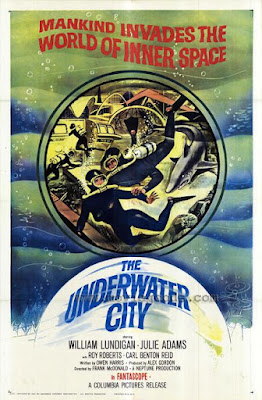
In general, I do my best to avoid giving spoilers in these blog posts. I try to describe a film without telling you any of the major twists and I try to use screenshots that give a sense of the action without giving anything away. I should say in advance, then, that this post includes spoilers. Though quite how you could spoil Underwater City is beyond me…
Underwater City does (surprisingly enough) exactly what it says on the tin. It is the story of a scientist’s plan to build a city on the seabed, totally self-sufficient and capable of sustaining life indefinitely. He has to justify his intentions (with vague claims about the seabed being the only safe post-nuclear-winter hideout) to his contracted builder, who is far more keen to get on with building a city on the moon.
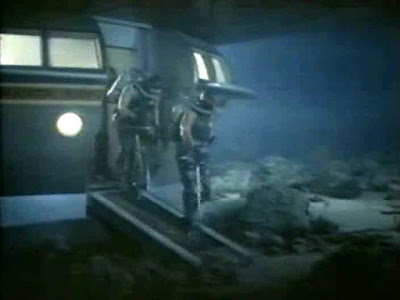
The version I had was recorded from tv, so not the best quality…
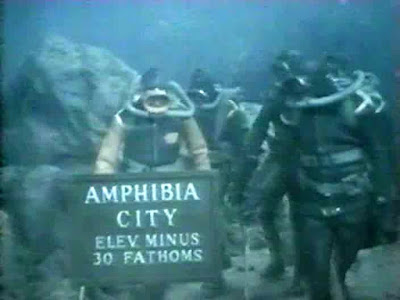
So far, so good. If I was writing the script here, I’d feel I’ve got a good premise. So we’re going to send a bunch of characters deep underwater to build this city and…. then what? What will be do with these characters? What disasters could befall them?
Sadly the real script-writers also seem to have got stuck at this point. Literally nothing happens. The film is only 75 mins or so long and it uses up a good 60 of these setting up the underwater city with no real hitch. We’ve got heaps of characters; the scientist, the architent, the navy lieutenant, his new wife, a dietician etc etc… and no story.

[Here comes spoilers, but face it: you’re never going to watch this anyway!] Suddenly, in the last 15 minutes we discover that the entire city has mistakenly been built on a thin layer over a massive ocean trench, the person who discovers this falls through to his death, delegates from Washington arrive to confirm the city as a part of America, the whole thing starts to fall apart, everyone escapes.
What? I mean seriopusly… what? Not only does all the action of the film take place in the last 15 minutes, but it’s also not half as exciting as that sounds! They explain away the mistake of the city’s location by pointing out that the diver who was conducting the geological survey fell into an Ocean trench and died. No-one ever completed the survey. … Hang on! The guy checking whether it was safe to build there DIED. And no-one thought that maybe that implies it was unsafe? Apparently not…
The (only) review on IMDb labels it as pleasant, inoffensive sci-fi, and is pretty much spot-on. There is nothing scary, nothing controversial, nothing rude… it’s not even particularly bad, just not very good either. It’s the kind of film that should be shown on bank-holidays in the daytime.
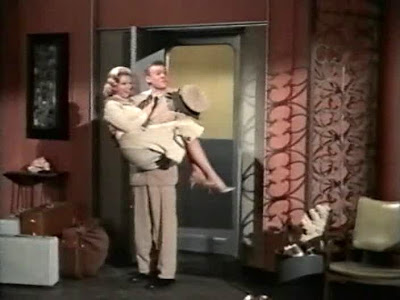
It also contains perhaps my favourite line ever uttered on screen:
“A swift current, as fast as a mighty river, but much faster”
Oh dear…
Dark City
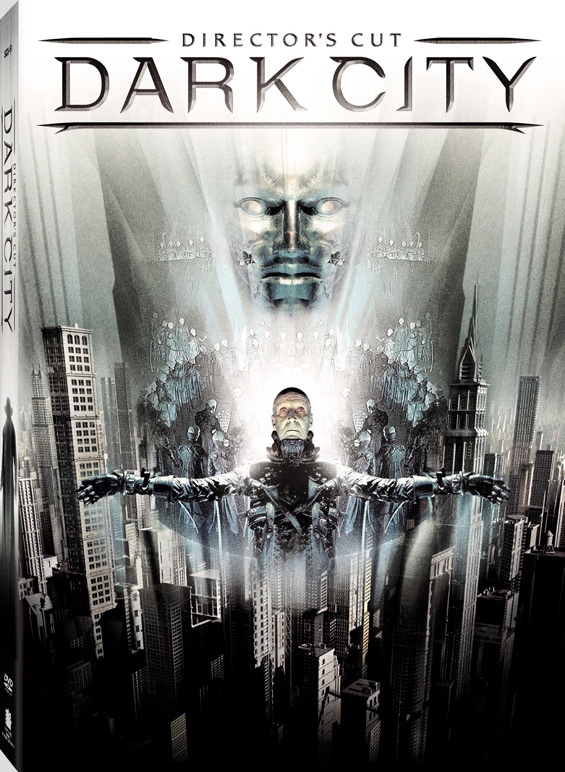
[I don’t know if the version I saw was the director’s cut…]
In my recent post on The Black Windmill, I mentioned that I watched a number of films that I would define as the criminally ignored. Well, if there is any film that earns the title “Criminally Ignored”, it must surely be Dark City.
Dark City is a beautiful film, Dark City is an interesting film, Dark City is a good, but most of all, Dark City is an underrated film.
It’s not hard to see how and why it was elbowed so cruelly from the limelight that it so clearly deserved; Dark City was filmed at almost exactly the same time as the Matrix, it was filmed using many of the same sets as the Matrix, it shared many of the same concerns as the Matrix. In fact, watching it after having seen the Matrix, you might easily think that they’d lifted large quantities from the Matrix.
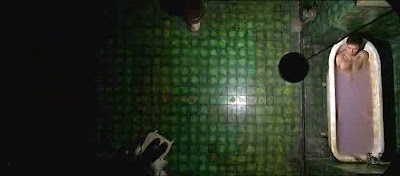

Both films show us a world in which the naive citizens are unaware of the scheme which they are a part of, a world which strange characters with a collective consciousness control, alter and move through as they please, a world where one somewhat unwilling hero represents the hope for humanity by escaping from the confines of his artificial-reality prison. Yes, the two films are really that similar.
There are, despite this, many diferences too. Part of the central thrill of the Matrix (and no-doubt a key factor in it’s success) is how intune it was with technology and our paranoia about computers and computer control. Whilst the Matrix is a virtual reality prison, Dark City relies on much more traditional (and so prosaic) fears. Here, rather than robot ‘agents’, the fake city is manipulated by aliens who are studying humans, each night they alter the city, fiddling with individual memories and observing our reactions. They turn rich into poor, poor into rich, invent backstories of happy summers and tragic memories. If anything, this is more threatening than the Matrix; our lives are not simply faked from day one, but altered every night without our knowing. Every single memory you have may well be artficial.
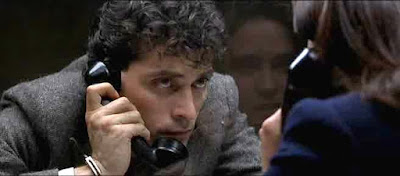
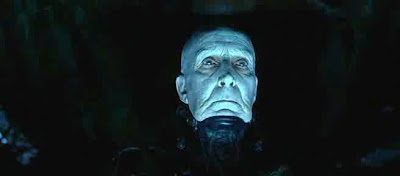
So why wasn’t it as successful as the Matrix? Visually, though very different, it is absolutely on par, for all the leather-clad cool of the Wachowski Bros. offering, here we have a city of film noir beauty, all night-time streets, phosphorescant street-lamps and chain-smoking detectives. So what WAS the crucial deciding factor? (For the purposes of artistic interest we are ignoring anything as dull as advertising budgets etc)
The answer, to my mind at least, is that there is very little between the films in terms of real merit, but only in terms of their awareness of the interests of the age (or the zeitgeist if you will…). The Matrix tapped perfectly into our interest at the time of release; where technology was on a balancing point between the realm of the hacker uber-nerd (Neo) and a means of control. Much as the zombie movies of the 70s mirrored Cold-War nuke paranoir, the Matrix excited us because it was able to tap into our fears at time. By comparison, however good a film Dark City may be (and it IS a good film) its aliens, its detectives and its film-noir atmosphere were far less striking.
Oh yeah, all that and the fact that it gets pretty silly towards the end…
Definitely worth a watch though.
Trailer follows:
Teleportal
From Nuisance Films comes two fabulous minutes of blood-drenched splatter horror. Though the fiom does cram a fair amount into it’s tiny running time, I shan’t say an awful lot here… save to say there are zombies, videogames and heaps of blood.
This was made for an ever-so reasonable £80 by Paul Shrimpton and Alex Chandon. Paul has previously won the Zone Horror ‘Cut!’ short films competition (with the, also excellent, ‘Hung Up’) and this film is definitely a film worth several watches. I just hope he makes something longer soon!
On-set photos (make up fx by Graham Taylor)

The Black Windmill
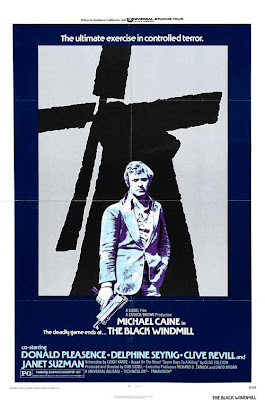
Many of the films I watch can be sorted into three categoraries - there’s big, well known films (there doesn’t seem much point writing about these, there are a million film blogs outs there…), there are the criminally ignored (the ones that really should be seen by everyone but just aren’t) and then the comically bad (the weird, the low-budget and the badly directed).
Black Windmill falls into none of these categories really. It’s not very well know, it probably doesn’t deserve much greater recognition and it’s not too bad. But not too good. So just…. you know….ok?


Sometimes though, an ok film is just fine. This is well acted (Michael Caine AND Donald Pleasence!), it has a vaguely engaging story and no major problems. Sadly it’s just npwhere near as gripping as it should be.
The plot meanders along; Michael Caine is a British spy, a baddie kidnaps his son in an attempt to blackmail diamonds from the British government, things all go a bit wrong from there. It’s all well written, with twists and turns in the story - hell, if you swapped the ‘diamonds’ for a dirty bomb or nuclear weapon you’d basically have the plot of a generic episode of Spooks!

Maybe though, that’s the problem. THe material here would probably work in a tightly edited hour-long tv episode but, clocking in at 1h40, this crawls along; the surprises aren’t surprising enough and the baddies aren’t bad enough. Ho hum.
But wait! It has got Michael Caine AND Donald Pleasence in it! All is not lost. Watch it if you’re bored; if you give up halfway through you’re probably not missing much…
(I realise that this sounds quite damning - it’s not meant to be. The film is quite good. It’s just not…. terribly exciting)
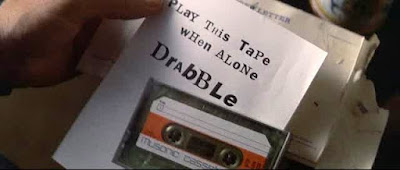
Poster Hunt #3 - I, The Jury
Another month can mean only one thing; it’s time for another Poster Hunt post. This time, fresh from the stash of exploitation flick posters for films I haven’t seen (and have little desire to…), comes Micky Spillane’s I, The Jury.
Coming from an era (1954…) when “man-woman violence” could be used as a selling point, here is I, The Jury
